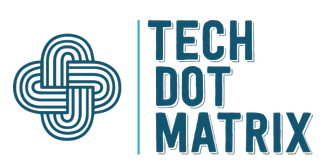
The fusion of Big Data analytics and the Internet of Things (IoT) is revolutionizing how we interact with technology, businesses operate, and society functions. As the IoT continues to proliferate, generating massive volumes of data from connected devices, harnessing this data through sophisticated analytics has become imperative. This synergy between Big Data analytics and IoT is not only reshaping industries but also driving innovation and efficiency across various sectors.
The Intersection of Big Data Analytics and the Internet of Things
The Rise of the Internet of Things:
The Internet of Things refers to the network of interconnected devices embedded with sensors, software, and other technologies, enabling them to collect and exchange data over the Internet. From smart home devices to industrial machinery, IoT applications span across diverse domains, facilitating automation, monitoring, and optimization of processes.
The Role of Big Data Analytics:
Big Data analytics involves examining large and varied data sets to uncover hidden patterns, correlations, and insights. It encompasses techniques such as data mining, machine learning, and predictive analytics to derive actionable intelligence from vast amounts of structured and unstructured data.
Convergence of Big Data and IoT:
The rise of Internet of Things (IoT) gadgets has led to a massive surge in data production. These devices continuously generate streams of real-time data, encompassing information about user behavior, environmental conditions, operational metrics, and more. Big Data analytics plays a crucial role in processing and analyzing this deluge of data, enabling organizations to extract valuable insights and drive informed decision-making.
Driving Business Value:
Organizations can derive significant value from IoT deployments by leveraging Big Data analytics. For instance, in the manufacturing sector, predictive maintenance powered by IoT sensors and analytics can 0help identify equipment failures before they occur, minimizing downtime and optimizing maintenance schedules. Similarly, in healthcare, IoT-enabled devices coupled with advanced analytics can enhance patient monitoring, facilitate early disease detection, and improve treatment outcomes.
Enhancing Operational Efficiency:
Big Data analytics enables organizations to optimize their operations by gaining deeper visibility into processes and performance metrics. Through IoT-enabled sensors and devices, businesses can capture real-time data across various touchpoints, allowing them to identify inefficiencies, streamline workflows, and enhance productivity. For instance, in the transportation and logistics industry, IoT sensors integrated with analytics platforms can optimize route planning, reduce fuel consumption, and improve delivery timelines.
Addressing Data Challenges:
While the convergence of Big Data analytics and IoT offers immense potential, it also presents challenges related to data management, privacy, and security. Managing the sheer volume, velocity, and variety of IoT data requires robust infrastructure and scalable analytics solutions. Moreover, ensuring the privacy and security of sensitive IoT data is paramount to safeguarding against cyber threats and maintaining trust among stakeholders.
Future Outlook:
The synergy between Big Data analytics and the Internet of Things is poised to drive further innovation and disruption across industries. As IoT ecosystems continue to evolve and expand, the demand for advanced analytics capabilities will grow exponentially. Emerging technologies such as edge computing, artificial intelligence, and blockchain are expected to play pivotal roles in enhancing the scalability, efficiency, and security of IoT data analytics solutions.
Conclusion:
The convergence of Big Data analytics and the Internet of Things represents a transformative force that is reshaping businesses, industries, and society at large. By harnessing the power of data generated by IoT devices and applying advanced analytics techniques, organizations can unlock new insights, drive operational efficiencies, and deliver superior experiences to customers. As we navigate this data-driven era, collaboration between data scientists, IoT engineers, and domain experts will be essential to harnessing the full potential of this technological convergence.
You might also like our TUTEZONE section which contains exclusive tutorials on how you can make your life simpler using technology.




